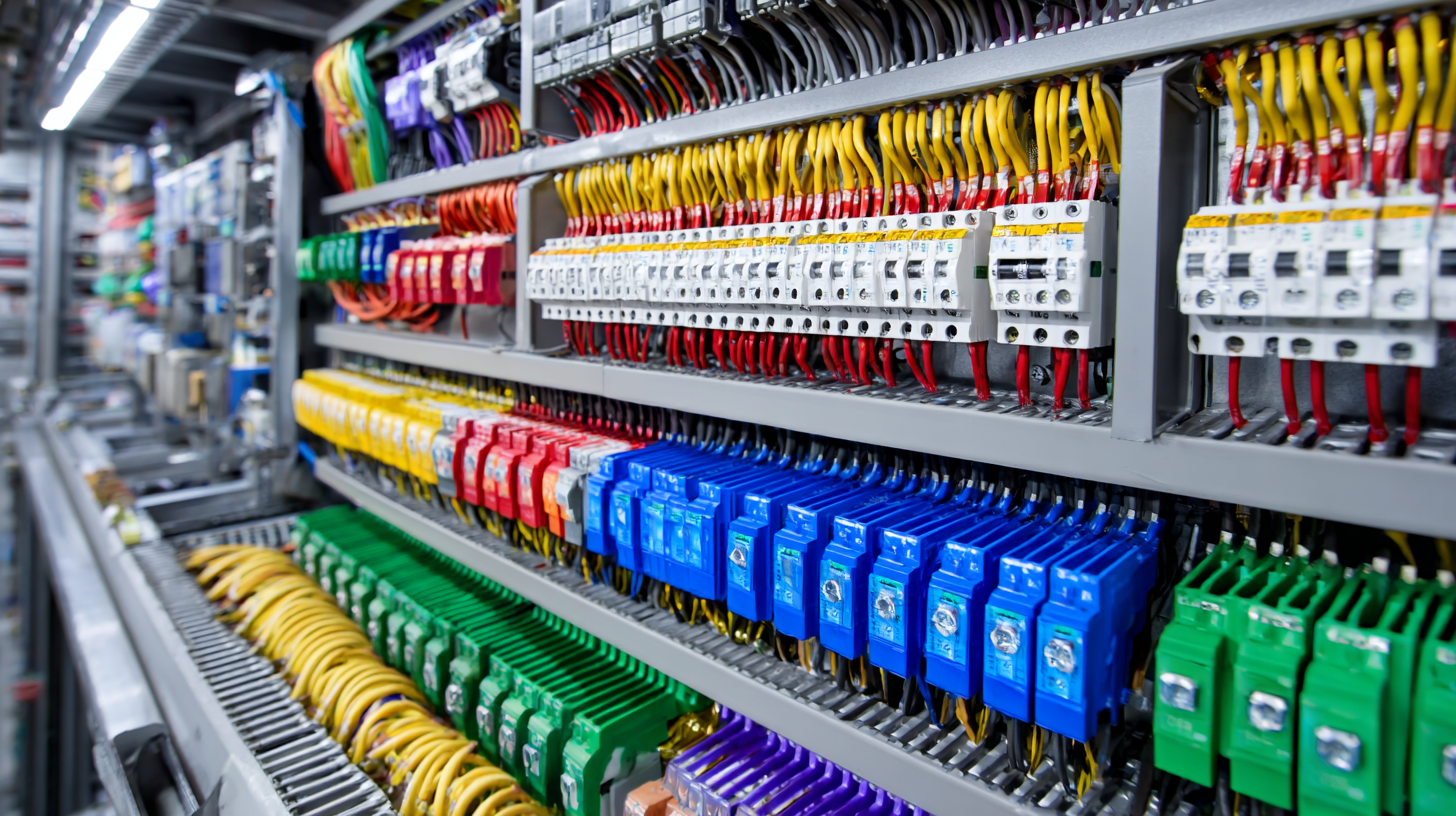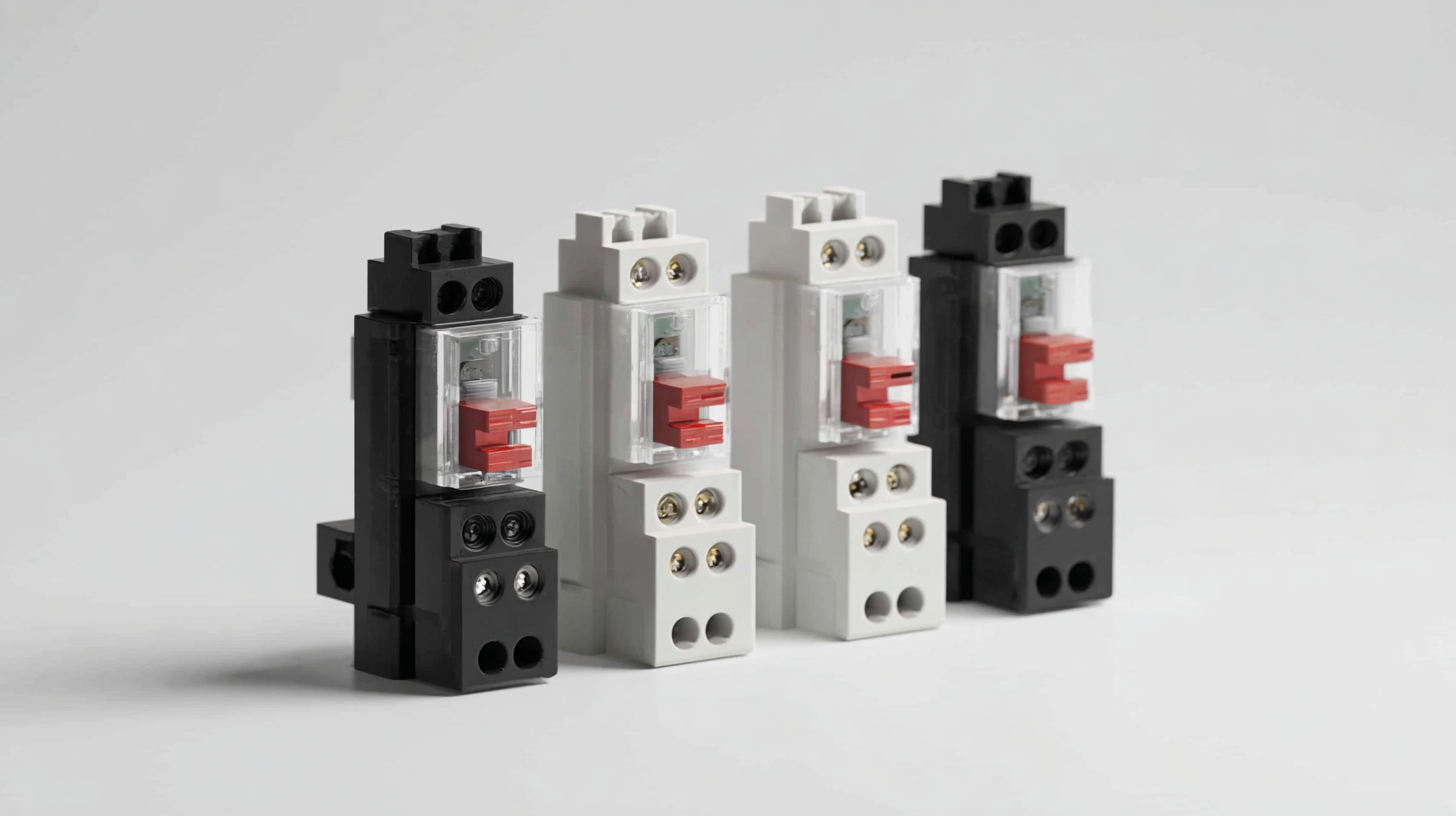Leave Your Message
-
Phone
-
E-mail
-
Whatsapp
-
Whatsapp


As the global demand for efficient and sustainable energy solutions continues to rise, the busduct plug in market is poised for significant growth by 2025. According to a recent market research report by Fortune Business Insights, the busduct systems market is projected to reach USD 1.10 billion, expanding at a compound annual growth rate (CAGR) of approximately 6.9% from 2021 to 2025. This robust growth is largely driven by increasing infrastructure development in emerging economies and the shift toward renewable energy sources. Furthermore, the need for effective procurement strategies has never been more crucial, as businesses aim to streamline operations while ensuring the selection of high-quality products, particularly from established manufacturers in China known for their superior manufacturing capabilities.

This blog will explore the latest global market trends surrounding busduct plug ins and provide essential tips for smart procurement in this evolving landscape.
 Busduct plug-in technology has emerged as a critical component in modern electrical distribution systems, providing an efficient and flexible solution for connecting power to various equipment and facilities. The core principle of busduct plug-ins is to offer a space-saving alternative to conventional wiring, allowing for easy installation and maintenance. This technology is especially beneficial in large commercial and industrial buildings where high power demand and the need for scalability are prevalent.
Busduct plug-in technology has emerged as a critical component in modern electrical distribution systems, providing an efficient and flexible solution for connecting power to various equipment and facilities. The core principle of busduct plug-ins is to offer a space-saving alternative to conventional wiring, allowing for easy installation and maintenance. This technology is especially beneficial in large commercial and industrial buildings where high power demand and the need for scalability are prevalent.
One of the key applications of busduct plug-in systems is in data centers, where reliable and high-capacity power distribution is essential. As businesses increasingly rely on digital infrastructure, busduct solutions enable streamlined power management and reduce the risk of outages. Moreover, their modular nature allows for quick adjustments and expansions in electrical setups without extensive downtime. Additionally, busduct systems are gaining traction in renewable energy sectors, providing seamless connections for solar and wind energy applications, ensuring that energy can flow efficiently from generation to grid.
In 2025, the demand for busduct plug-ins is expected to rise significantly as industries seek efficient and flexible power distribution solutions. Key technical specifications that buyers should consider include current ratings, installation ease, and design configurations. A busduct plug-in with a higher current rating can accommodate increased loads, making it suitable for expanding facilities or high-power applications. Additionally, modular designs allow for easier installation and maintenance, providing organizations with the flexibility to adapt their setups as their needs evolve.
Another critical aspect is the integration of advanced monitoring and safety features in busduct plug-ins. Enhanced communication capabilities enable real-time monitoring of electrical parameters, which ensures timely maintenance and reduces downtime. Furthermore, adherence to international safety standards and certifications is essential, as it guarantees that the product meets stringent reliability and safety requirements. As the market progresses towards sustainability, buyers should also consider energy-efficient options that not only comply with regulations but also contribute to a lower carbon footprint. With these specifications in mind, organizations can make informed procurement decisions that align with their operational goals and future growth.
| Specification | Value | Market Trend | Tips for Procurement |
|---|---|---|---|
| Voltage Rating | Up to 36 kV | Increasing Demand for High Voltage Solutions | Evaluate the voltage requirements before purchasing. |
| Current Rating | Up to 5000 A | Shift Towards Higher Capacity Systems | Choose current ratings that meet future operational needs. |
| Material Type | Aluminum / Copper | Preference for Lightweight and Durable Materials | Consider thermal and electrical properties of the materials. |
| Insulation Type | Epoxy Resin / PVC | Trends Toward Enhanced Insulation Performance | Assess insulation properties based on environmental conditions. |
| Modular Design | Yes | Growth in Modular Busduct Systems | Ensure compatibility with existing setups. |
The global market for busduct plug-ins is poised for significant growth, driven by the increasing demand for efficient and flexible electrical distribution systems. According to a report by MarketsandMarkets, the busduct market is expected to reach approximately $8 billion by 2025, growing at a compound annual growth rate (CAGR) of around 5.5% from 2020. This surge is primarily attributed to the rise in industrialization and urbanization, particularly in developing regions where the need for streamlined power distribution systems is critical.
Furthermore, advancements in busduct technology, such as the introduction of smart busduct systems equipped with IoT capabilities, are reshaping procurement strategies. A recent study by Grand View Research highlights that the integration of smart technology in busduct systems can enhance energy efficiency by up to 20% while reducing overall maintenance costs. As organizations recognize the benefits of adopting these innovations, it becomes essential for procurement professionals to be well-informed about evolving trends and supplier capabilities to ensure they make strategic purchasing decisions. Implementing smart procurement processes will not only safeguard investments but also align with the growing emphasis on sustainability and efficiency in the energy sector.
When it comes to smart procurement of busduct plug-ins, understanding market trends and essential items is paramount for maximizing efficiency in both planning and purchasing. With the global market projected to evolve by 2025, keeping an eye on innovative features and technologies will help your organization stay ahead in a competitive landscape. Incorporating budget-friendly and high-quality components into your procurement strategy can lead to better performance outcomes for your electrical systems.
One indispensable tip is to do thorough research on available options, focusing not only on compatibility and specifications but also on supplier reliability and customer support. Just as music producers rely on plug-in effects for crafting their sound, businesses must carefully select their busduct plug-ins to ensure seamless integration and efficiency. Quality over quantity is vital; prioritize essential products that deliver the best value and dependability. Additionally, maintaining a good relationship with suppliers can lead to exclusive deals and insights into upcoming trends, making your procurement smarter and more strategic.
This chart illustrates the projected growth in the market for busduct plug-ins from 2023 to 2025, highlighting the increase in demand across different segments.
As we look towards the future of busduct plug-in solutions, it’s evident that innovation will play a crucial role in shaping the industry. Recent advancements in materials and technologies are driving the development of busduct systems that are not only more efficient but also more sustainable. Manufacturers are increasingly adopting lightweight, high-conductivity materials that enhance energy efficiency while reducing the overall footprint of these solutions. This shift not only supports environmental sustainability but also aligns with the growing demand for energy-efficient infrastructure worldwide.
Furthermore, the integration of smart technologies into busduct systems is revolutionizing operational capabilities. With the rise of the Internet of Things (IoT), smart busduct solutions are now equipped with real-time monitoring and analytics, allowing for predictive maintenance and improved safety. By leveraging data analytics, facility managers can optimize power distribution and reduce downtime, thus enhancing overall productivity. The future of busduct plug-ins is not just about functionality; it is about creating intelligent systems that adapt to the dynamic needs of modern electrical infrastructures, paving the way for smarter, more interconnected buildings.

